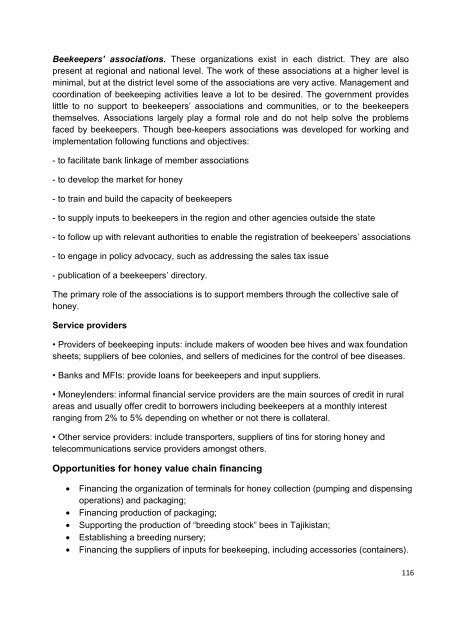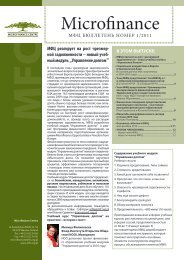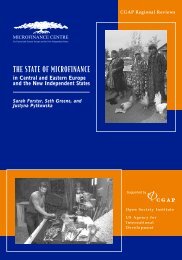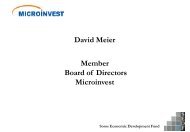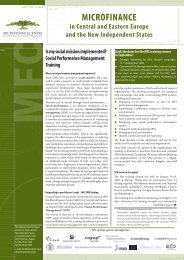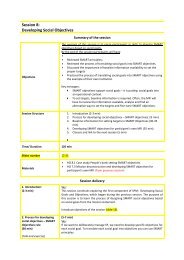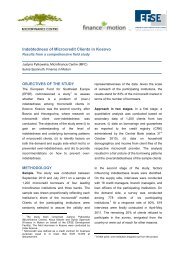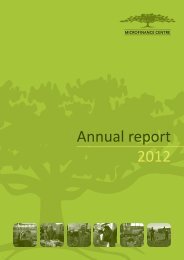Value Chains research report Tajikistan final - Microfinance Centre
Value Chains research report Tajikistan final - Microfinance Centre
Value Chains research report Tajikistan final - Microfinance Centre
You also want an ePaper? Increase the reach of your titles
YUMPU automatically turns print PDFs into web optimized ePapers that Google loves.
Beekeepers’ associations. These organizations exist in each district. They are also<br />
present at regional and national level. The work of these associations at a higher level is<br />
minimal, but at the district level some of the associations are very active. Management and<br />
coordination of beekeeping activities leave a lot to be desired. The government provides<br />
little to no support to beekeepers’ associations and communities, or to the beekeepers<br />
themselves. Associations largely play a formal role and do not help solve the problems<br />
faced by beekeepers. Though bee-keepers associations was developed for working and<br />
implementation following functions and objectives:<br />
- to facilitate bank linkage of member associations<br />
- to develop the market for honey<br />
- to train and build the capacity of beekeepers<br />
- to supply inputs to beekeepers in the region and other agencies outside the state<br />
- to follow up with relevant authorities to enable the registration of beekeepers’ associations<br />
- to engage in policy advocacy, such as addressing the sales tax issue<br />
- publication of a beekeepers’ directory.<br />
The primary role of the associations is to support members through the collective sale of<br />
honey.<br />
Service providers<br />
• Providers of beekeeping inputs: include makers of wooden bee hives and wax foundation<br />
sheets; suppliers of bee colonies, and sellers of medicines for the control of bee diseases.<br />
• Banks and MFIs: provide loans for beekeepers and input suppliers.<br />
• Moneylenders: informal financial service providers are the main sources of credit in rural<br />
areas and usually offer credit to borrowers including beekeepers at a monthly interest<br />
ranging from 2% to 5% depending on whether or not there is collateral.<br />
• Other service providers: include transporters, suppliers of tins for storing honey and<br />
telecommunications service providers amongst others.<br />
Opportunities for honey value chain financing<br />
• Financing the organization of terminals for honey collection (pumping and dispensing<br />
operations) and packaging;<br />
• Financing production of packaging;<br />
• Supporting the production of “breeding stock” bees in <strong>Tajikistan</strong>;<br />
• Establishing a breeding nursery;<br />
• Financing the suppliers of inputs for beekeeping, including accessories (containers).<br />
116


